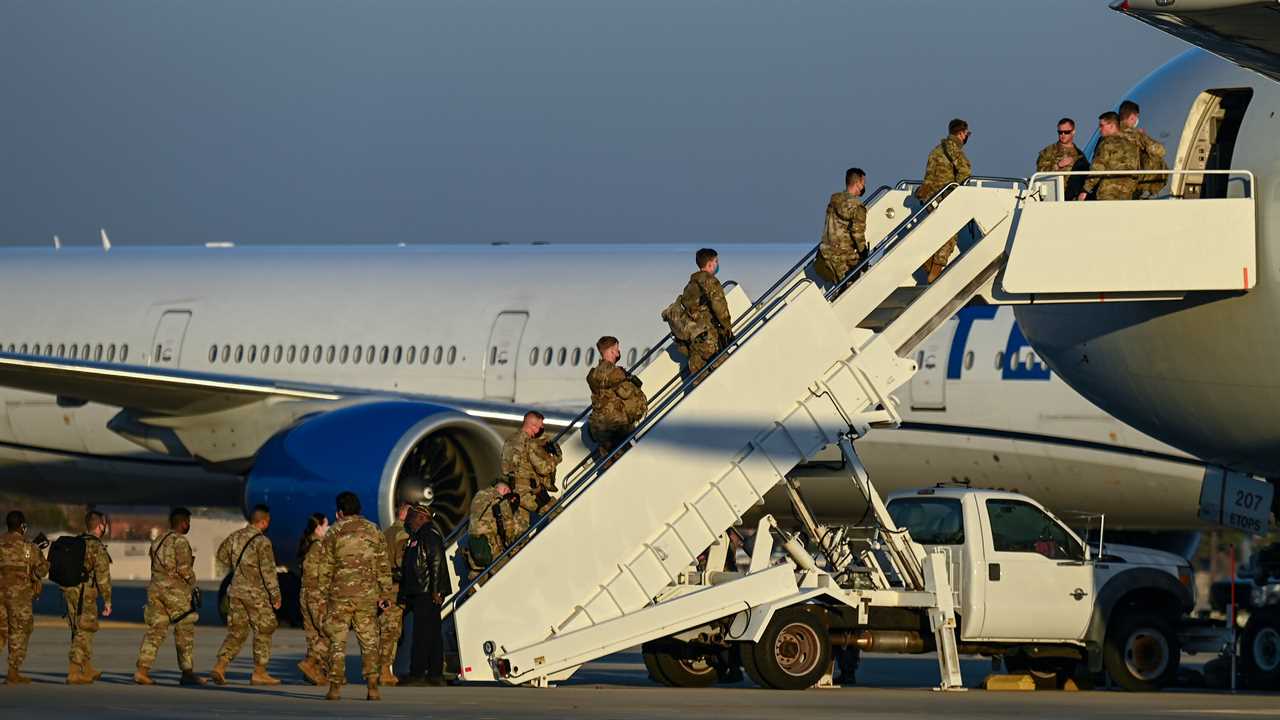
WASHINGTON — As Russian forces head toward Kyiv with what the Pentagon described as an apparent aim of “decapitating” the Ukrainian government, Defense Secretary Lloyd J. Austin III ordered an additional 7,000 troops to Europe with the continent facing the biggest land war since World War II.
The Pentagon ordered the deployment of an armored brigade combat team to Germany to reassure skittish NATO allies in Eastern Europe, said the Pentagon press secretary, John F. Kirby. In particular, American military officials say the move is meant to warn President Vladimir V. Putin of Russia that while the United States is not sending troops to Ukraine, it will not hesitate to act if he turns his eye toward a member of the North Atlantic alliance.
Senior Pentagon officials made a flurry of phone calls to their European counterparts about what Mr. Kirby called Russia’s “illegal and destabilizing actions.” The American troops heading to Germany, he said, will be able to be quickly repositioned to other countries on NATO’s eastern flank as they are needed.
Military officials gave a grim assessment of the toll on Ukraine some 24 hours into the Russian invasion. Russian warplanes, they said, have launched more than 160 airstrikes on military facilities and the Ukrainian air defense system.
More ominously, they said that three lines of Russian forces, with their Goliath-size advantage over the Ukrainian military, were converging swiftly on three cities in Ukraine: Kharkiv in the east, Kherson in the south and Kyiv, the capital, with its three million residents. In Kyiv, one senior military official said, the target appeared to be the government of President Volodymyr Zelensky. The forces, the official said, were assembling from Belarus in the north and Crimea in the south, using missiles and long-range artillery.
The Pentagon’s assessment suggested that “they have every intention of decapitating the government and installing their own method of governance,” the official told reporters in a briefing at the Defense Department. Even as he conceded that the Pentagon did not have “perfect knowledge” of the Russian troop movements, he described what he characterized as the “initial phase of a large-scale invasion,” coming from Belarus and Crimea.
Russian forces so far have been striking Ukrainian military installations and air defense targets using more medium- and short-range ballistic missiles. Russia has also used sea-launched missiles from warships in the Black Sea, the official said. So far, it has not attacked the west of Ukraine.
Live Updates: Russia Attacks Ukraine
- A strike in Ukraine points to the use of cluster munitions, banned by most countries.
- The Chernobyl plant was reported captured by Russia. What is there?
- Congressional intelligence leaders say the Russian army appears ready to invade Kyiv.
Military officials said Ukrainian forces have been fighting back, with the heaviest combat in Kharkiv.
“We haven’t seen a conventional move like this, nation-state to nation-state, since World War II, and if it unfolds the way that hereto we believe it will come to, it has every potential to be very bloody, very costly and very impactful on European security writ large,” the official said, speaking on the condition of anonymity because he was not authorized to make those comments publicly.
One American official noted that while the Ukrainian military was dwarfed by Russia, Ukrainian troops may still be able to inflict some damage on Russian soldiers as the fighting continues.
Understand Russia’s Attack on Ukraine
What is at the root of this invasion? Russia considers Ukraine within its natural sphere of influence, and it has grown unnerved at Ukraine’s closeness with the West and the prospect that the country might join NATO or the European Union. While Ukraine is part of neither, it receives financial and military aid from the United States and Europe.
Pentagon officials had expected that Russian forces would cut off communication lines within the Ukrainian military in the initial hours of an invasion; that has not yet happened, a senior military official said.
The American troops headed to Europe will not be going to Ukraine; President Biden has ruled that out. But Thursday’s deployment of the First Brigade of the Army’s Third Infantry Division will bring to 14,000 the number of American troops that Mr. Biden has moved closer to the fighting since the Ukraine crisis began. Their arrival will bring to nearly 100,000 the number of American troops in Europe.
The deployment came as Mr. Biden warned on Thursday that the United States would “get involved” if Mr. Putin made any moves into countries in the North Atlantic Treaty Organization.
The Pentagon this week moved six F-35 fighter jets and a slew of other warplanes to Eastern Europe to shore up support for NATO allies. Mr. Austin also ordered an infantry battalion task force — some 800 troops — to the Baltics. Those troops and warplanes were already in the European theater, the official said.






